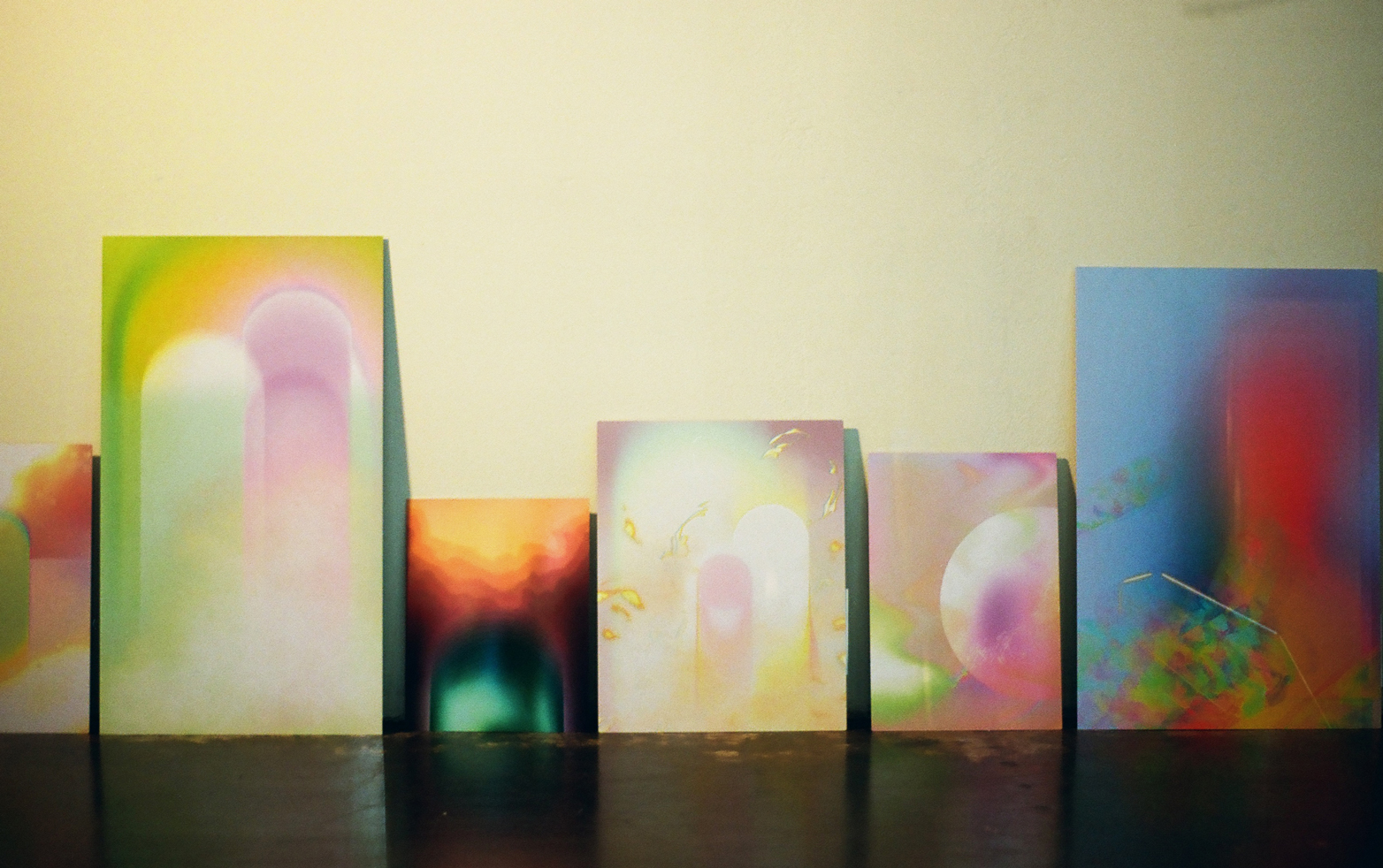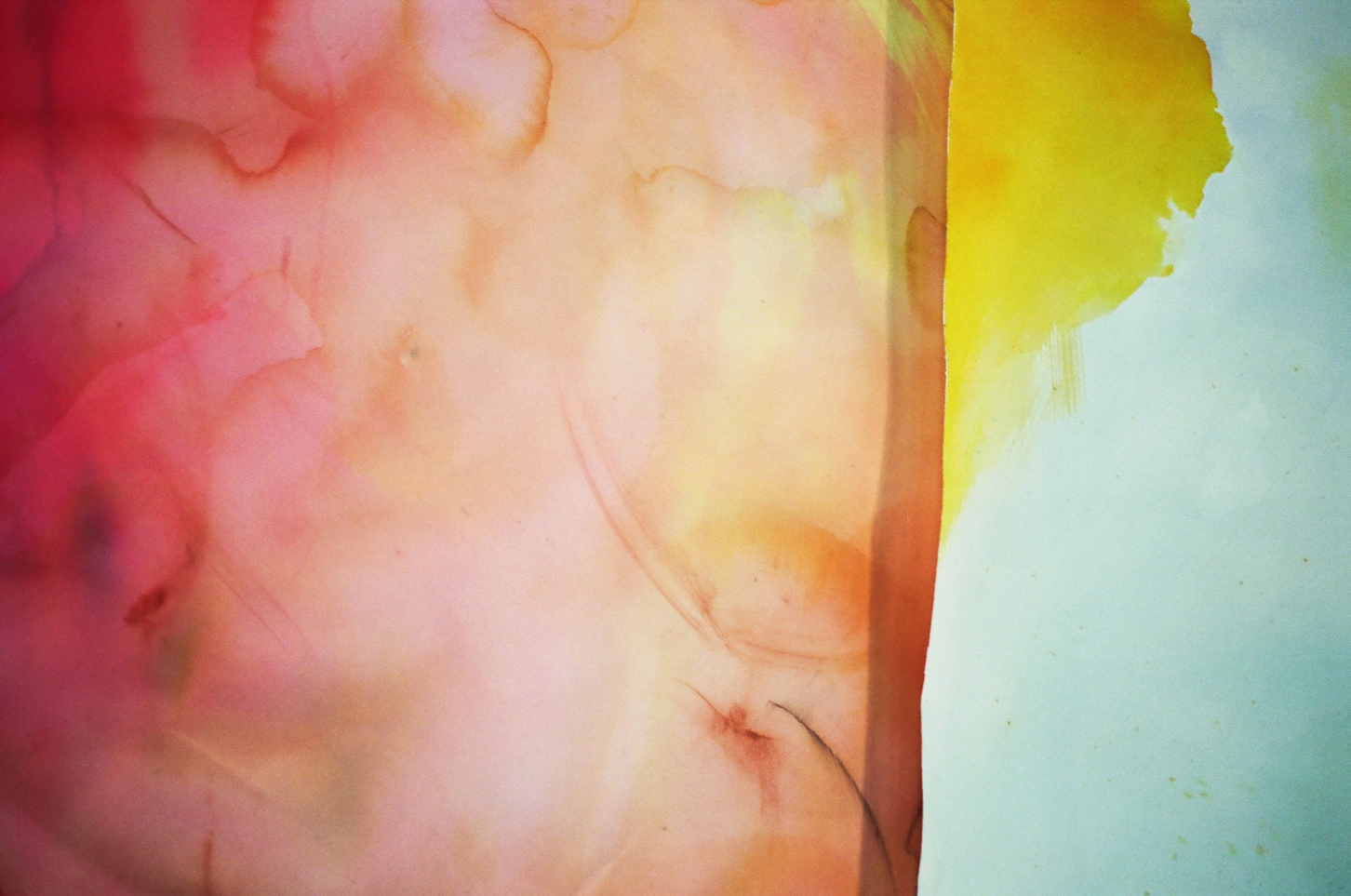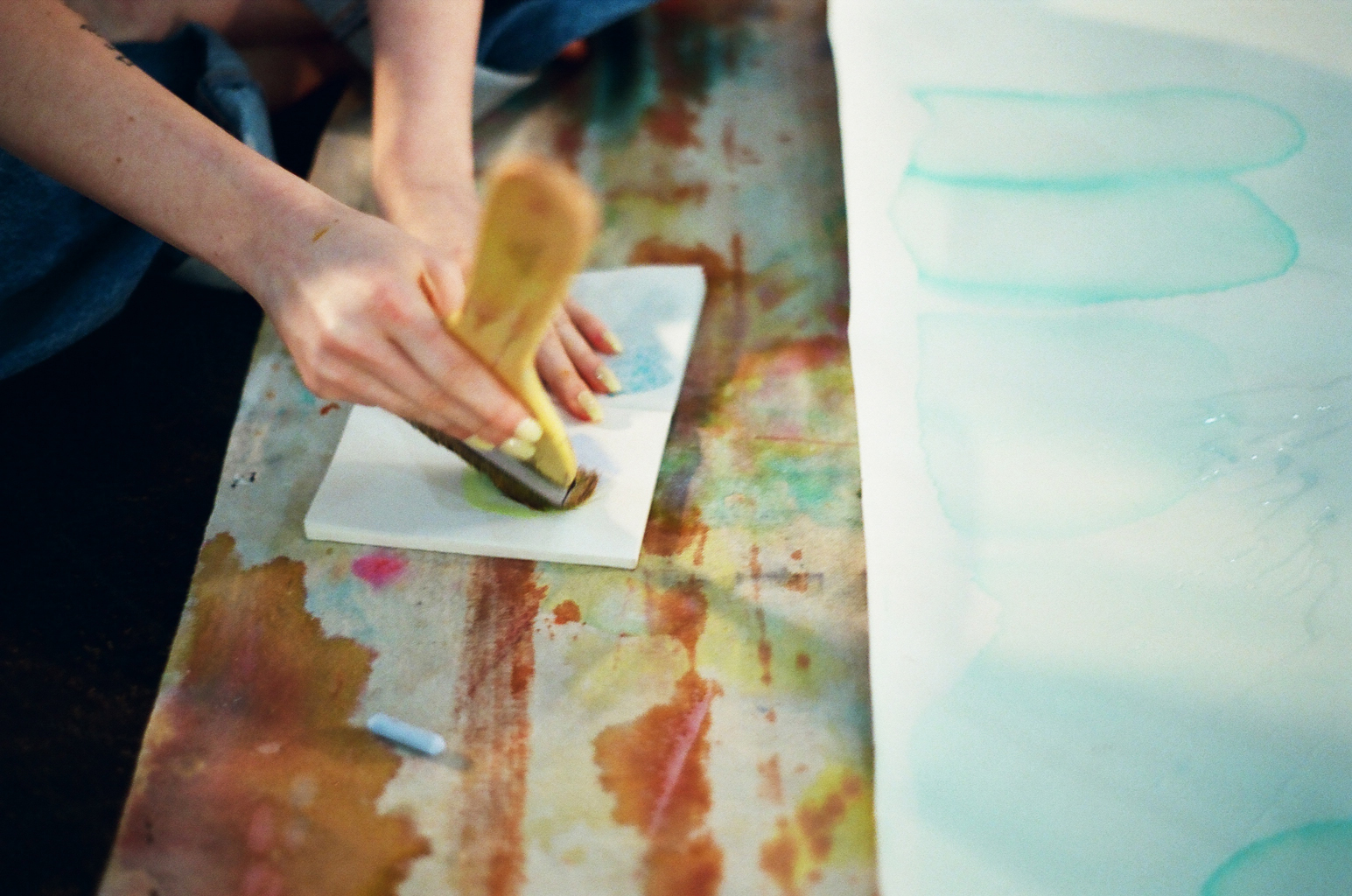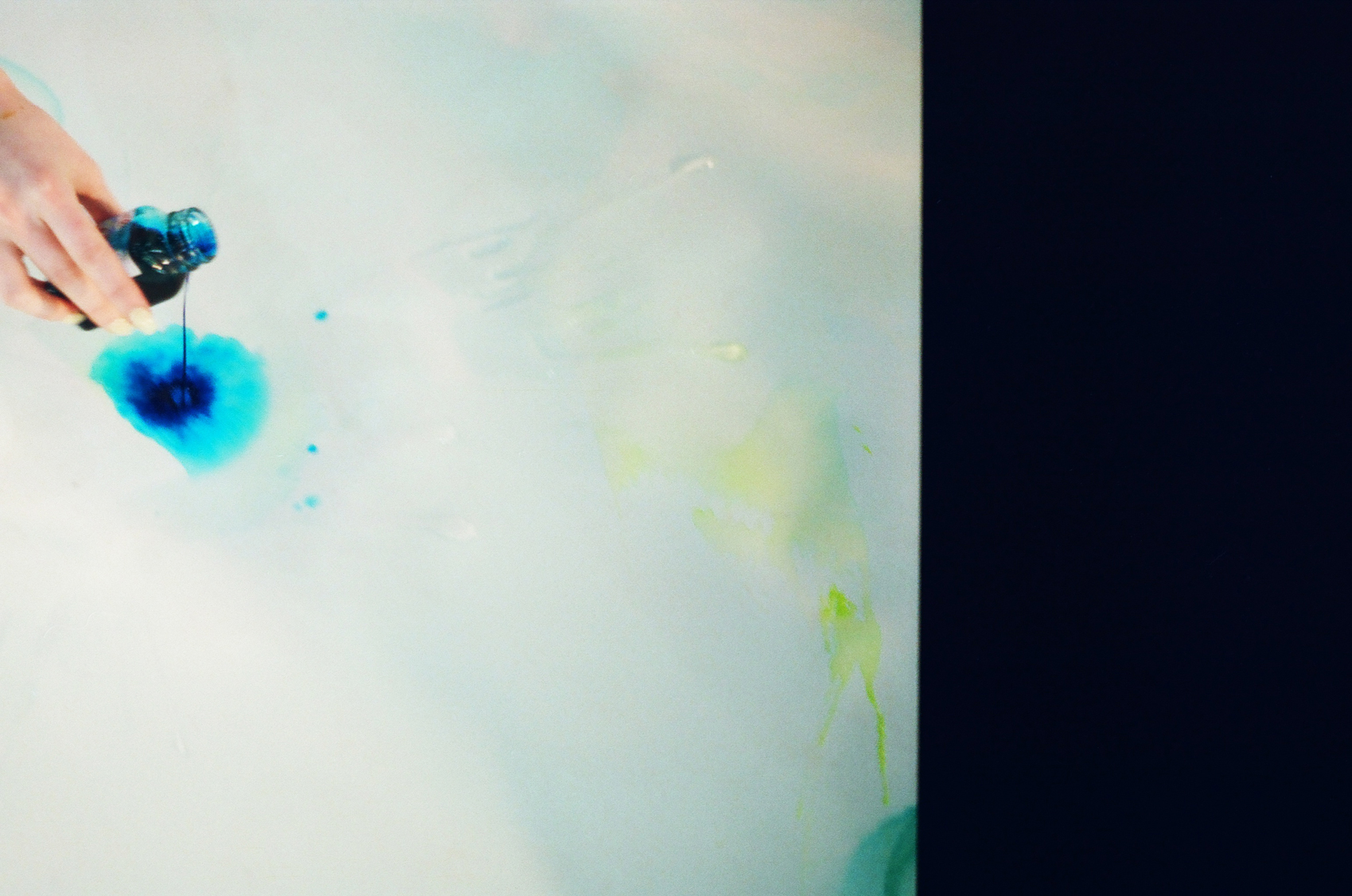Welcome to our new series where we highlight working artists currently on staff at the Frye Art Museum. The Frye has a wealth of talented Seattle-based artists working under its roof in many different capacities, each with their own dedicated arts practice outside of their work at the museum. Facilitated and written by Alexis L. Silva, Curatorial Assistant, this series is meant to highlight and celebrate these individuals, showcasing their amazing work and arts practices.
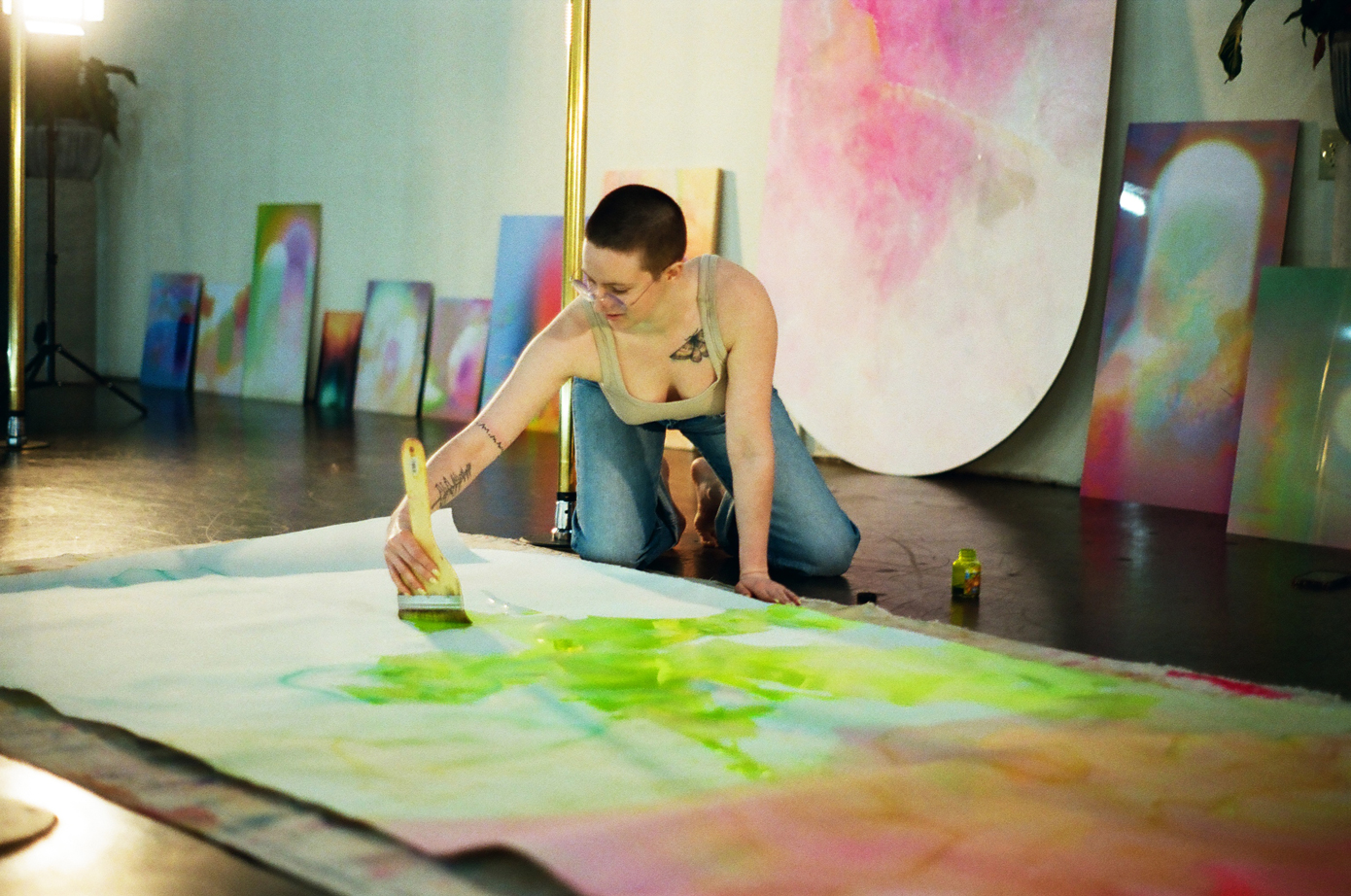
Photo: Alexis L. Silva
By Alexis L. Silva
There is always something beautiful about commuting to a new city. The small sounds on an almost empty bus, the gray wet outside rushing past you as you zoom down the highway, your favorite album playing in your ear making you feel like you’re in a music video. You begin to wonder what you’ll experience, who you will see or meet, whether the air will feel different in your lungs. You step off and step into this new environment and suddenly, you realize that there’s more than just the four blocks you walk every day and the same coffee shop you go to every morning: there are so many communities to explore and get involved with—you just have to get on that bus and go.
Tucked away in University Place—a suburb of Tacoma, WA—you’ll find Lilith Pole, a pole dancing studio that “aims to empower their students through cultivation of athleticism and creative expression.” The space is filled with shiny golden poles that reach from floor to ceiling. Amongst these poles, you may find Lydia Jewel Gerard (She/Her), a Tacoma-based artist whose involvement with Lilith Pole is not only movement based, but also involves community-oriented curatorial work and is the site of her temporary studio. Lydia’s dreamlike paintings and digital works encapsulate a sense of warmth and light, creating an emotive atmospheric experience. Her works have been shown in both Tacoma and Seattle at venues such as the Julian Peña Gallery, The Factory at MoM, Cloud Gallery, Spaceworks, and many more. Lydia also works as a Security Officer at the Frye, where she monitors the museums exhibition galleries to maintain the safety of patrons, staff, and artwork.
I took a trip down to Tacoma to meet with Lydia to dive into her practice, community work, and overall experience as an artist in the Puget Sound area.
The following has been edited for length and clarity.
Can you start by telling us about your background and how you began your arts practice? I would love to know where you grew up and how you got here!
My mom is from California and my dad is from the Northwest and I grew up in both places. But mostly I would say that I am from here. I grew up out on the Kitsap Peninsula in Port Orchard, and I was really lucky to take some amazing art classes through the Running Start program at Olympic College. I was also doing competitive Contemporary dance at that point. Then I transferred to Pepperdine University in Malibu, CA. I come from a long line of teachers and both of my parents went to Pepperdine, they were really [enthusiastic] about me going. I was this teenager with a mohawk and I was not excited to go and hang out with a bunch of rich Pepperdine kids. But it was a good experience! Pepperdine’s art program is not that big, but I was lucky because all the older professors had just retired and there were all these new professors who were just out of grad school or in their emerging artist phase. They had a lot of relevant information to share and they did not know how to run an art department so they just ran it like a graduate program. We all had our own studio space and met up for these brutal critiques…and that was pretty much it! I did my thesis on sexual repression in the church, as I grew up in the Church of Christ. It culminated in an amazing show at the end. That’s really when I got into working with ink and paper. I did a lot of weird experimental stuff with floor detritus and taking prints off peoples’ studio floors working mostly with sepia ink. I really thrived that year!
After that, I struggled with an eating disorder, so I was having a lot of depression and anxiety and also physically recovering from that. I got a job managing a bakery kitchen in Tacoma and was just focused on surviving. My partner and I moved here in 2016 and it was an awesome decision. Tacoma was a really good place to recover. In Tacoma, you get everything you want out of a small town without having to live in a small town. You’re close enough to [Seattle] to do city things plus there’s a bunch of creative people. At the time we moved here Spaceworks was doing some really interesting stuff with supporting artists in the community. I had made a lot of work but I had honestly kind of given up. I think it happens sometimes. It’s really hard and discouraging. I think if you are not at 100%, which I think a lot of people aren’t, it’s just very overwhelming. I didn’t really pursue any gallery shows or anything like that for a while. But then, two years ago I just felt like it was time and decided to just go for it.
I think that what was really encouraging and what really helped me get going was working with Julian Peña and Julian Peña Gallery. The first time I went to Capitol Hill Art Walk, I went to his gallery and afterwards I messaged him on Instagram—total shot in dark—and just said, “Hey I want to show in your gallery!” And he was just like, “Yeah! Go for it!” It was just so unexpected and even though it wasn’t prestigious it still gave me something to work towards. Afterwards I realized how much work I had made and thought to myself, “I want to do more of this!” I eventually contacted Timothy Rysdyke about just putting up a piece at the Hideout. I didn’t realize at the time that that was a bigger deal than I thought it was. He let me know that he didn’t have a spot for me at the Hideout, but he asked if I could pull together a show for the Factory in two weeks. And I said “Sure!” I felt like it was something people could recognize. I kept showing up, which led to me meeting more people and people getting to know who you are.
I started getting contacted to do more pop-ups and 1-day events. It was super encouraging and I was meeting people that I am very grateful to know. I was experiencing this small success that felt like a big success and I started to think, “how could I give this to other people?”And that’s how I began to do all the things with Lilith Pole, because what they are really doing here is trying to grow the community and insert luxury and wealth and control over your own situation into the community. They always say, “We want people to appreciate ass the way they appreciate art, and we want people to appreciate art the way they appreciate ass.” And that is what we are doing here: a temple to art and ass. I spend a lot of time on Instagram looking for art calls and try my best to share those out as much as I can as I know not everyone has the bandwidth too look for those kinds of things. I try to share information as much as I can and connect people that I am meeting with each other. I go back and forth when it comes to concepts of exclusivity and luxury because they are so tied into the history of art and to our experience of art. It would be my desire to redefine those concepts because I think that they are important but I think the way we interact with them now is so very much rooted in classism, racism and white supremacy. But, concepts of exclusivity can also apply to a sacred space and how we create boundaries, which I think they are related but they are like two sides of a coin. It’s been so interesting to meet woman and men who work in sex work here, because they’re desirous of having things that are theirs and they see themselves and their bodies and the work that they do as their property. And their art work, I think that’s related too.
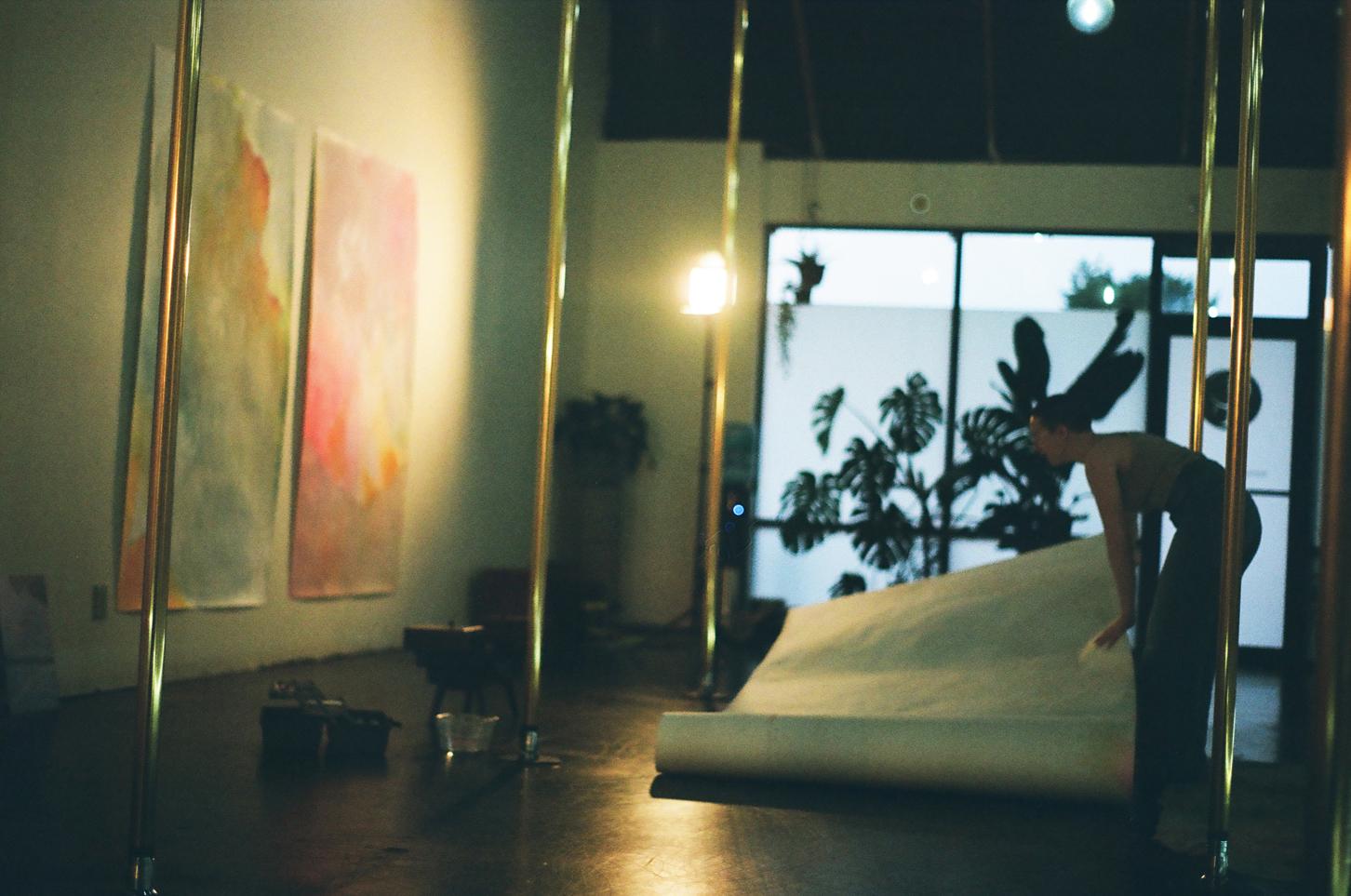
You have this amazing arts practice that is so rich, but you also have a dance practice and a curatorial practice. Could you tell me about how they all come together, how they influence each other, and how you navigate them either separately or all together?
Before I had a dance practice or a curatorial practice, I had my own art practice, so I think that that informs what I am interested in in those other realms. In dance, I am interested in exploring the same ideas that I am interested in exploring in my artwork. In curation, I am trying to give people the things that I know have made a big difference to me. I know that for me, there was a long chunk of time where I didn’t have the emotional energy to do my own research and anytime someone shared information with me, it was huge! Life changing! As much as I can, I want to share the information that I have with the community. Curation is a more direct way to do that, by offering someone the opportunity to exhibit work. It can be hard though, because I have high standards and I also have a background in academia, so my concept of what good art is is related to my taste and specific knowledge base. My work isn’t the fullest expression of my taste. I try to separate my curatorial work from my art practice to some extent because there is a lot of work that doesn’t appeal to me, but I can still recognize it as valid and deserving of space and attention. There is a lot of figurative painting out there that doesn’t really appeal to me but I cannot discredit it. And there are a lot of folk practices in art…When you are doing curatorial work that is specifically related to building community, I feel like you have to think about how your notes are going to be received. I am not just curating in an academic or institutional setting where the only thing that matters is the longevity or the critical acclaim of what I am curating, but I do not see that as a bad thing. There is a space for all of it. The work has definitely been very mind broadening. People are really challenging those longstanding rules of what is and what isn’t high art. I think it’s an exciting time and I am also very excited to be doing it in Tacoma because it really is like a blue-collar town—it’s a place where you can break more rules, and that’s enjoyable.
As someone who does not know much about the Tacoma art community, could you tell me more about it? How would you describe the Tacoma art community?
Struggling. Very DIY, for sure. There are a few pillars of the creative community here that are just invaluable to us. Most of them are related to business in some way, like ETC, which is a streetwear brand that runs out of Tacoma. And Umi Wagner, who is one of the owners, is a very creative-minded man with a passion for creative endeavors in Tacoma. His business does not need to be in Tacoma; he used to work for The Hundreds, a pretty famous streetwear brand from LA. But he brought his practice to Tacoma because he loves Tacoma. Diamond Leah is a high fashion brand that started in Tacoma, and the owner Diamond similarly chooses to live here. There’s a lot of people like that who are working to get resources into the hands of people who need them here. The people who live here don’t live here because they are trying to make it. Tacoma is also weird because it's been “up-and-coming" for the last 20 years, but the shift never really happened. I think that we are all just trying to figure out whether we can make it happen. And I hope we can, I think that’s exactly what we are trying to do here.When we have historically worked on the art community in Tacoma, it’s been like, “let’s do the same things that work in other places, let’s make another Seattle art community in Tacoma.” We’re only going to get an art community in Tacoma if we put the ability to collect art in the hands of the people who live here. If we can make art accessible and affordable for people who live and work in Tacoma and create that investment. It’s hard because you then have to talk about pricing, and artists getting paid—because the artists also have to get paid. Then you have to talk about how much the arts rely on funding from big companies and corporations that donate money in order to host art events. Tacoma is only going to gain an art community if it can be self-sustaining.
The compositions you create through layers of color and markmaking have a dreamlike quality to them, milky and lucid. Could you walk through your process? What colors are you most drawn to and how do you choose them?
I am super impacted emotionally by light and warmth. Those are things that I spend a lot of time thinking about in daily life. They feel like inconsequential things; I often struggle with writing about my work because it feels like the things that matter to me are not big, worldly, important things in terms of the actual content of my work. I think I am doing a lot of interesting things around my work that are more societally oriented, but in terms of the content of my work, I feel like it’s very personal and somewhat wholesome. I really care about the way light and warmth make me feel and I believe in their power to make other people feel things. In the moment of making work, I’m really looking at relationships between colors and how they create or take away warmth.
Pinks are the foundational color family of my work. In college, I was really drawn to sepia ink, the kind used for calligraphy. The amazing thing about sepia ink is when you manipulate in ways that it is not supposed to manipulated, it will pull. Especially if you put down one layer, you let it sit for just a second, then you put down a big wash of water and tilt the paper so it all runs down, you’ll see three separate colors pull out of that one color. There is a blue, an almost violet, an orange, and then there’s this beautiful rosy pink. And that was sort of the beginning of my obsession with ink—specifically pink ink. It’s really about relationships and how things interact, and the combination of things as a big part of how we feel emotion.
The Julian Pena Gallery show was called Nightlight and it was about feeling safe. My mom would always talk about how you should always have accent lighting, because that lower level of light overlaps in a different way with your surroundings and it makes you feel warm and safe even if you aren’t warmer or safer. I think about things like that a lot, and I think about the color that gets overlooked because you think you know what color it is. For example, in the fall when all the trees lose their leaves, you would say that everything just looks brown or green, but if you take time to look, the undertones of most of those browns—especially the deciduous trees in this area—is a purple. And you’ll see a hazy purple through a big group of those trees. There is a ton of red in nature, leaves that are green, but they are also red. You wouldn’t even notice the green if the red was not there. In a way, it is related to my curatorial practice because I am trying to make connections that would otherwise be overlooked.
I also really enjoy using water soluble pastels, which have an almost crayon texture. But when you add a little bit of water, it becomes a chalky consistency which you can then move around and fade in and out. I don’t enjoy working with anything that you can’t manipulate with water, which is so inconvenient when you live in a state where it rains…all the time. I like the water-soluble pastel symbolically because it is something that you can put down a hard line with, but you can also manipulate it in the future. It has beautiful glowing quality. I love the material and I use it a lot in smaller scale works, but I have moved a lot of my energy into digital work. It’s interesting to see how the two mediums inform each other. There’s an effect similar to pulling the colors from sepia ink that you can do digitally, called chromatic aberration, which does the same thing. I didn’t want to just become a digital artist and I want to be able to find a cohesive middle ground that connects both my digital works and my paintings.
In a way, it's pretty fun, because I am participating in the dialogue of how they are connected to each other. In this day in age of AI and NFTs, being someone who is interested in the connection of analog and digital art and technology and how that affects under-resourced communities, I feel like it’s a really fun nexus to be in. It’s been interesting too, because being interested in these things has connected me to people who are on all different paths with technology. There is a clear distinction between those who are for it or against it, or people who think it’s literally the antichrist and people who think it’s the savior, the Christ or the antichrist. I am not really one or the other, but I like being friends with all those people because I stay in the know. Some of my recent works are based on the way that the light was changed during the smoke seasons we’ve been having. That’s actually really interesting to me—I mean of course environmental collapse is horrible and we are all experiencing massive existential dread because of it. But I love the way the sun looks through that smoke, have you ever seen such a saturated red? So I am finding all these beautiful things in the death of the world. It’s a strange world.
Tell us your vision for the future of the Seattle and Tacoma arts communities.
Regarding the Seattle arts community, my experience has been really great. I have met so many people who are excited about the arts. But there is this general sense of malaise, like, “oh it's not what it used to be” or “the arts are dying.” I would love to see the Seattle art community work for people involved, and that’s hard, it’s a big ask. Things have to change in a way for that to happen. But that is my hope. I would also love for the Seattle art community to get more involved with the Tacoma art community. I think that Tacoma has potential to make an interesting name for itself doing something very different and I would like game to recognize game. I don’t think that’s far from our reach, that’s something that can totally happen! And I would like to be part of that.
Where can we find your work? (Socials, website, upcoming or on-view shows, etc.)
The next show that I am curating is in Tacoma, it’s titled “Birds of Paradise” and will be held at Lilith Pole. It will include Seattle-based artist Nikita Ares along with some local dancers and DJs. I have an upcoming solo show at Steve Gilbert Studio on Capitol Hill which opens March 9. It opens the day before my birthday, so bring me presents! You can find me on Instagram at @peri.shon and on my website at lydiajewelgerard.com.
